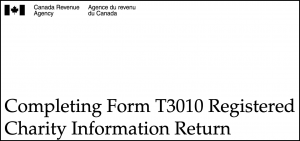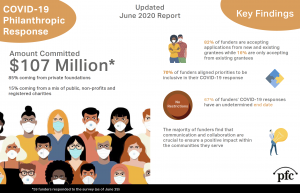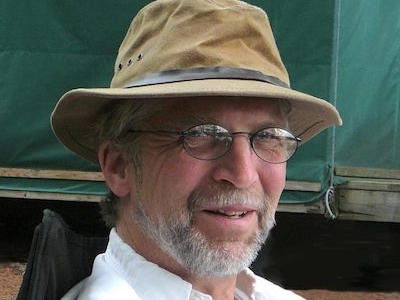 Jean-Marc Mangin is President & CEO of Philanthropic Foundations Canada (PFC), Canada’s national network for philanthropic foundations and other grantmakers, which includes many of the largest charitable foundations in the country. Before that, he was Executive Director of the Federation for the Humanities and Social Sciences, Canada’s the largest national organization of researchers and scholars. Mangin is a member of the Advisory Committee on the Charitable Sector, a consultative forum for the Government of Canada that’s co-chaired by the Canada Revenue Agency and that ensures that the regulatory environment supports the work that charities do, among other roles of the ACCS. As part of PANL Perspectives’s series on Data, he spoke about data-collection and -analysis issues and the increased role of government in our sector.
Jean-Marc Mangin is President & CEO of Philanthropic Foundations Canada (PFC), Canada’s national network for philanthropic foundations and other grantmakers, which includes many of the largest charitable foundations in the country. Before that, he was Executive Director of the Federation for the Humanities and Social Sciences, Canada’s the largest national organization of researchers and scholars. Mangin is a member of the Advisory Committee on the Charitable Sector, a consultative forum for the Government of Canada that’s co-chaired by the Canada Revenue Agency and that ensures that the regulatory environment supports the work that charities do, among other roles of the ACCS. As part of PANL Perspectives’s series on Data, he spoke about data-collection and -analysis issues and the increased role of government in our sector.
Question: What’s the state of data collection and analysis in the philanthropic and nonprofit sector?

In the third article of our Data series, Shawn Bunsee, Vice President of Data & Analytics and Chief Privacy Officer at CanadaHelps until 2022, explains how the nonprofit sector needs to mature when it comes to data issues.
Mangin: In the not-for-profit and charitable sector, we have a huge data deficit that needs to be fixed, and we have a lot of work to do in terms of turning data into accurate storytelling. The available data has gaps and many inaccuracies. It’s hard to get a breakdown of exactly what organizations are doing and with whom for example. We know that the sector is important for society and that it represents a significant part of Canada’s GDP, but we have much less data compared to culture industries, compared to fisheries, compared to other parts of society.
Data in our sector isn’t systematically collected and analyzed so that we understand trends early on and identify gaps in services and initiatives across the country.
Q: What data does PFC use? Where do you get data?
 Mangin: We use a lot of data that flows from the T3010, which is a report that every charity has to submit to the federal government every year. That data sets an important foundation — many countries don’t even have that — but the data in the data set is quite poor, and there are many mistakes in how the T3010 is completed. Most charities submit a paper copy, instead of online, and the reports lack clarity. So, for example, DQ (Disbursement Quota), which is the percentage of expenditures that charities must make based on their assets, isn’t tracked, because we don’t have the data. (The federal government recently raised the DQ from 3.5% to 5%.) Collecting this data should be straightforward, but in fact, the form itself is confusing, and it leads to many mistakes on the T3010.
Mangin: We use a lot of data that flows from the T3010, which is a report that every charity has to submit to the federal government every year. That data sets an important foundation — many countries don’t even have that — but the data in the data set is quite poor, and there are many mistakes in how the T3010 is completed. Most charities submit a paper copy, instead of online, and the reports lack clarity. So, for example, DQ (Disbursement Quota), which is the percentage of expenditures that charities must make based on their assets, isn’t tracked, because we don’t have the data. (The federal government recently raised the DQ from 3.5% to 5%.) Collecting this data should be straightforward, but in fact, the form itself is confusing, and it leads to many mistakes on the T3010.
Question: PFC started a unique data-collection initiative during the pandemic. Can you explain what happened?
 Mangin: During Covid, we tried to get a sense of whether or not foundations were increasing their disbursements of funds, and to whom, and for what activities. We couldn’t wait for the data to appear in a few years on T3010 forms. We created our own data sets and asked our members to upload their information on a regular basis, so that we could get a better sense of disbursements. We found out that many foundations were more generous during Covid, compared to disbursements in 2008 and 2009, when there was a retrenchment. The increased funding moved from project-based to program-based initiatives and to multi-year core funding, with simplified application processes. There was a good story there, but it took some work to collect the data, and sustaining the data collection was very hard, because it increased administrative burdens on grantors and grantees.
Mangin: During Covid, we tried to get a sense of whether or not foundations were increasing their disbursements of funds, and to whom, and for what activities. We couldn’t wait for the data to appear in a few years on T3010 forms. We created our own data sets and asked our members to upload their information on a regular basis, so that we could get a better sense of disbursements. We found out that many foundations were more generous during Covid, compared to disbursements in 2008 and 2009, when there was a retrenchment. The increased funding moved from project-based to program-based initiatives and to multi-year core funding, with simplified application processes. There was a good story there, but it took some work to collect the data, and sustaining the data collection was very hard, because it increased administrative burdens on grantors and grantees.
Q: What should be done to improve the T3010 and data in general?

Canada Revenue Agency offices. Photo by Jean Gagnon, Wiki Commons
Mangin: The T3010 needs better taxonomy, so that charities can check boxes regarding their activities. The categories now are so wide that it’s hard to tell what they’re doing in parts of the sector. For example, we don’t have a good sense of how many foundations in the country run international development activities and provide international assistance. We have some sense of it, but the aggregated data is limited, and trying to figure out trends is complicated, and it doesn’t have to be. The T3010 could be improved to be more user friendly and to capture better and more in-depth information about the sector — and to help us tell stories about contributions more effectively.
And the context is good now, because of the new DQ and new legislation about Non-Qualified Donees, so there’s an opportunity to revisit the T3010 form — to start tracking information about receiving funding, and from whom, and for what kind of activities. Also, there’s an opportunity to track profile characteristics about organizations, such as whether they’re LGBTQ-led or Indigenous-led or other information. The Canada Revenue Agency is moving in that direction. They’re in conversation with many players in the sector, so I’m hopeful. It’s not going to happen tomorrow, but I’m hoping in the next two or three years we have a new T3010 form.
Q: Are there other things that government can do?

In another article in our Data series, Michael Lenczner, the founder and CEO of Ajah, talks about issues and challenges related to data technology and training in the nonprofit sector in Canada.
Mangin: The T3010 is only one avenue. Statistics Canada is another. It took a massive snapshot of the sector in the early 2000s, so it’s overdue for an update. There’s interest from Stats Can to be more engaged — to take regular snapshots about the sector and to collect data that’s currently hard to obtain through the T3010.
Another avenue is the work done in the sector itself. For example, the CICP-PCPOB initiative launched by Carleton last year. Asking specific questions every couple of weeks gives us a feeling for the pulse of the sector, especially of issues facing the sector.
We have limited resources to try to improve data collection and analysis. The key player has to be government; that’s why I’m putting an emphasis on the T3010 and engaging Statistics Canada — and helping to create platforms. The use of government administrative data must be more systematic.
Government sets the rules and framework. We need more regular reports from Statistics Canada about the charitable sector. There are conversations taking place about that.
Wednesday, May 10, 2023 in Data Discoveries, For homepage, News & Events
Share: Twitter, Facebook



